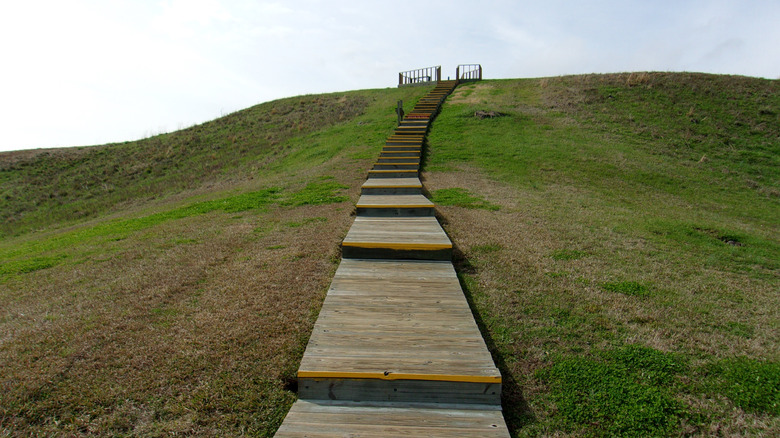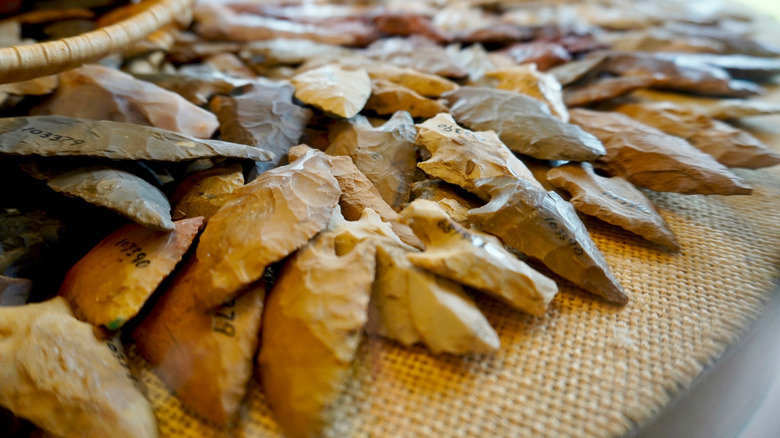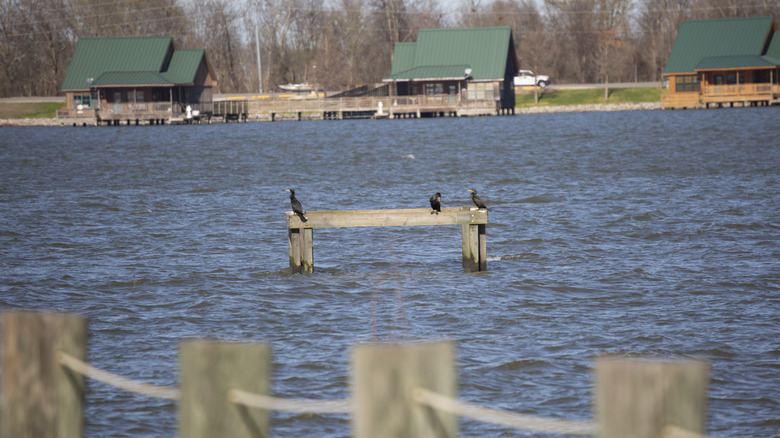This Fascinating UNESCO World Heritage Site Offers A Window Into Thousands Of Years Of Louisiana History
Although Louisiana is famous for its Mardi Gras celebrations and food destinations — like Gonzales, a city called the Jambalaya Capital of the World — the state's multi-layered cultural heritage dates back farther than the pirates, Spanish, and Acadians of more recent history. There were Native Americans here long before European settlers, and there's a place in what's now Northeastern Louisiana that is so ancient and extraordinary that it is a UNESCO World Heritage site.
Of the world's 1,121 UNESCO World Heritage sites, which range from the Roman Colosseum to the Great Barrier Reef, only 24 are in the U.S. These include the enchanting 1,000-year-old Taos Pueblo in New Mexico, the Statue of Liberty, and various archaeological remains of ancient America, such as Hopewell Ceremonial Earthworks by the Ohio River. Among these protected locations is the Poverty Point World Heritage Site, named after the plantation that occupied this area in the 19th century, 3,400 years after an advanced civilization built a series of earthen mounds.
While it's not near any other well-known tourist destinations in the state, there is much to discover at this UNESCO site. Poverty Point is around an hour from Monroe and its regional airport, over 2 hours from Alexandria, and about an hour and a half from the Jackson-Medgar Wiley Evers International Airport (JAN) in Jackson, Mississippi. Louisiana's bigger cities are further away: Poverty Point is about a 3-and-a-half-hour drive from Baton Rouge, and roughly a 4-hour trip from New Orleans.
Why Poverty Point is so special
The Indigenous people built the earthen mounds and half circles at Poverty Point between 1,700 and 1,100 B.C., placing its development alongside the rule of Tutankhamun in Egypt, the peak of Minoan civilization in Crete, and the final stages of Stonehenge's erection in England. Its construction was done without the wheel, modern tools, or help from animals.
Judging from the millions of artifacts discovered at the site, Poverty Point was likely a trading hub and government center. What's more, the items — like decorated soapstone bowls, owl-shaped carvings, and ceramic figurines — were crafted from materials sourced from up to 800 miles away, thought to have been traded via rivers from as far afield as Iowa and the Appalachian Mountains. The site is on Bayou Macon, a Mississippi River tributary, and doesn't have its own native stone. During this period, people commonly lived in small groups; however, hundreds, if not thousands, of people are believed to have lived on the Poverty Point site.
The civilization shaped nearly 2 million cubic yards of soil into six massive half-circles and mounds, including one that is an impressive 72 feet tall. Archaeologists believe these structures were residential and ceremonial spaces. Poverty Point was abandoned for unknown reasons around 1100 B.C., but a later Native American community built on top of it about A.D. 700. The site, which charges $4 admission, is open daily from 9 a.m. to 5 p.m. and offers tours, educational programs, and a 2.6-mile trail around the area.
What to do after your visit to Poverty Point and where to stay while in the area
There are around 40 Native American earthen mounds in Northeast Louisiana, so you could follow the Ancient Mounds Driving Trail to delve deeper into this fascinating history. Or, if you're in the mood for some Southern hospitality and Antebellum architecture, Natchez, Mississippi, is under a 2-hour drive from Poverty Point.
The state parks around Poverty Point also offer plenty of choices for fishing, beginning with the 2,700-acre Poverty Point Reservoir State Park, where you can rent a boat and throw a line to try for largemouth bass and catfish. Head to the 15,000-acre Lake D'Arbonne State Park for your chance to catch bass and bluegill. Lake Bruin State Park is another nearby outdoor playground for fishing, swimming, and waterskiing.
This area is in the Mississippi Flyway, so be on the lookout for Louisiana's state bird, the pelican, as well as cormorants, geese, and ducks. Speaking of ducks, fans of the A&E TV series "Duck Dynasty" will want to visit the Duck Commander store and museum in West Monroe.
There's a range of places to stay, including park cabins and campgrounds. Nearby budget chains include the OYO Hotel Monroe LA I-20, which features an outdoor pool and free breakfasts with nightly rates beginning at around $50. Another option is the La Quinta Inn & Suites, where rates can be as low as around $120, depending on the day and season.


